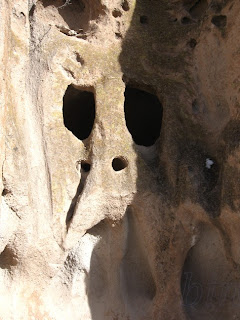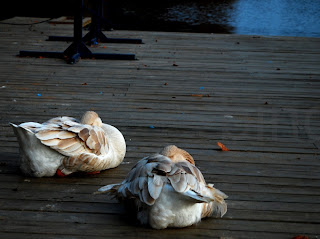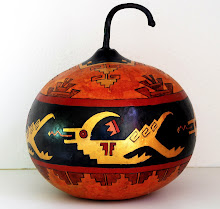It's that season again! The season when endangered
Olive Ridley sea turtles return to the East Indian Coast to nest after their mysterious wanderings at sea, having traveled long distances - even all the way to Australia!

It is a wonder of nature how these gentle creatures remember the beach of their birth. The female returns to it when she is around 12 years old, and lays her eggs in the night, after which she returns to sea, leaving her babies to fend for themselves. They arrive at the beaches of India during nesting season between end-December and March.
What sights they must have seen on their wanderings, and how interesting their stories must be! But sadly, rather than being received with awe and being allowed to follow their ancient tradition in peace, these smallest of the world's sea turtles are facing dangers in many forms as they return to nest.

Fishing trawlers, oil exploration platforms, and development along the beaches are all major dangers that they face. With the trawlers for instance, they get ensnared in the giant nets, and unable to surface for air, they suffocate and die. They are discarded by the trawlers and wash up on shore, dead.

In response, many volunteer groups and researchers have set up night-long vigils, trying to maximize the success of the nesting season. One such groups is the
Students Sea Turtle Conservation Network or SSTCN.
SSTCN volunteers walk the beaches of Chennai (my hometown) every night during nesting season, keeping a lookout for turtle tracks. They follow the tracks, locate the jar-shaped nests underground and retrieve the eggs within. They take measurements of the nests and re-construct them at a safe hatchery further along the coast and re-bury the eggs there.
Hatchlings emerge after 45 to 60 days, and follow the trail of the moonlight to the sea. Due to lights along roads and homes along the shore now, confused hatchlings head in the opposite direction instead. So volunteers use torches to light their way to the sea.

A couple of years ago, on a visit to India during nesting season, Raghav and I went on a turtle walk with the volunteers of SSTCN, to help collect eggs from nesting sites to relocate to a safe spot in the hatchery. It was incredible and sad in many ways.
I didn't take my camera along, because we would be working with our hands in the sand, and so all the pictures here are from the website of SSTCN.We were led on this walk by an experienced volunteer named Arun, and were joined by half a dozen other volunteers as well. There was a small group of ~10-year old school kids as well, getting a first-class biology lesson right there on the beach. Their excitement and wonder filled me with hope.

The beach had completely emptied by the time we started our walk close to midnight. I watched the rolling, dark waves pounding a rhythm on the beach and wondered how many turtles were out there, swimming to shore right before my unseeing eyes!
Since we were not using torches and were walking by moonlight, it was very dark. The children had gone very quiet, and the whole group was intent on locating turtle tracks in the sand, as we walked along the beach.
Soon tracks were sighted, and we followed them to a soft spot in the sand. We watched as a volunteer quickly felt around the neck of the jar-like nest and extricated soft, ping-pong ball sized eggs that were quickly transferred to a bag. Once the nest was empty, we walked on.

Soon afterward, the kids started squealing in excitement. I looked in the direction they were pointing and saw two full grown females on the sand. Excited, we ran toward them. The experienced volunteers held back. They knew these were dead. Washed up ashore having met human-made obstacles as they approached the beach. It was the saddest sight ever.
I felt frustrated and deeply disturbed. As we rush headlong towards modernization, we should ensure that we take all the world's creatures with us into the future. Our actions are destroying habitat quality and availability at an alarming rate! We need to do something. Except, I didn't know what to do.
When the next track was sighted, Raghav got to extricate the eggs while I held the torch for him. I sent a prayer into every little egg that we pulled out and willed that baby inside to get a chance in life. That was the best I could do.
Here's a picture of SSTCN volunteers with freshly laid eggs.

After collecting around 240 eggs from 2-3 nests that night, we were at the end of our 7 km walk, and at the hatchery. I helped dig a jar-shaped hole in a corner by the fence, while another volunteer measured it so that it would match the nest from which that group of eggs was taken. After burying the last egg, the kids took their bus home and the rest of the volunteers went to sleep.

Raghav and I were too wired to sleep. We sat at the sea side in the moonlight and contemplated what we had witnessed. We were at a loss for words though, and sat in silence, lost in our own thoughts.
In a couple of months these eggs would hatch, and volunteers would guide the little babies out to sea. The big sea out there with its trawlers and polluted waters seemed too vast and dangerous for the tiny little baby turtles. They seemed just so fragile!

Only one in about 1000 hatchlings survive to adulthood, and we had collected just ~240 eggs! And even those that survive will face more dangers at sea as they make their way back here to nest. Will this beach welcome them when they return?
As the end of the year draws near and we enjoy the Holidays with family and friends, there are Olive Ridley females in the ocean out there, swimming against distant currents, following the magical instinct of their ancestors to the beach of their birth. I pray for their safety this season, and in the years to come.












































